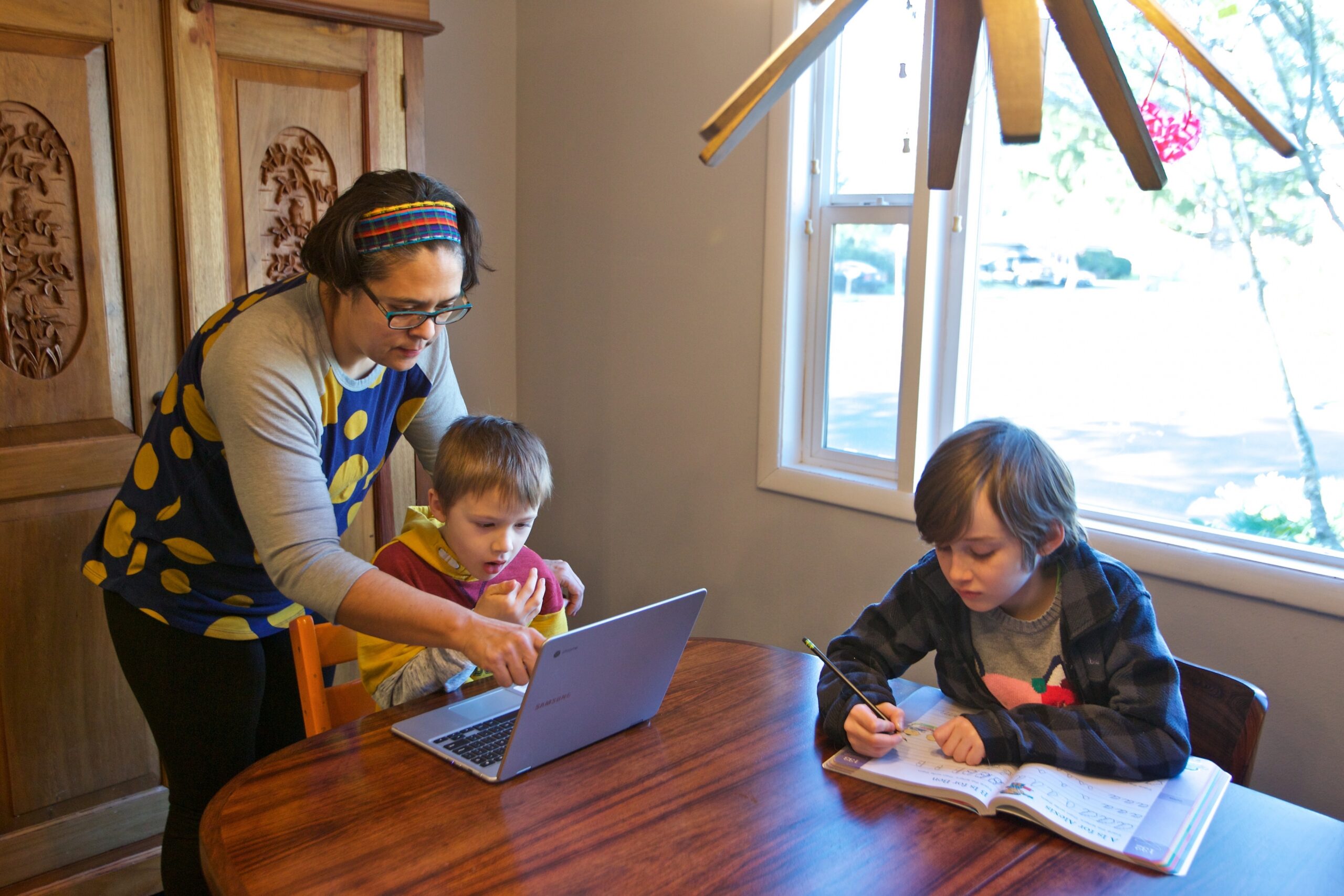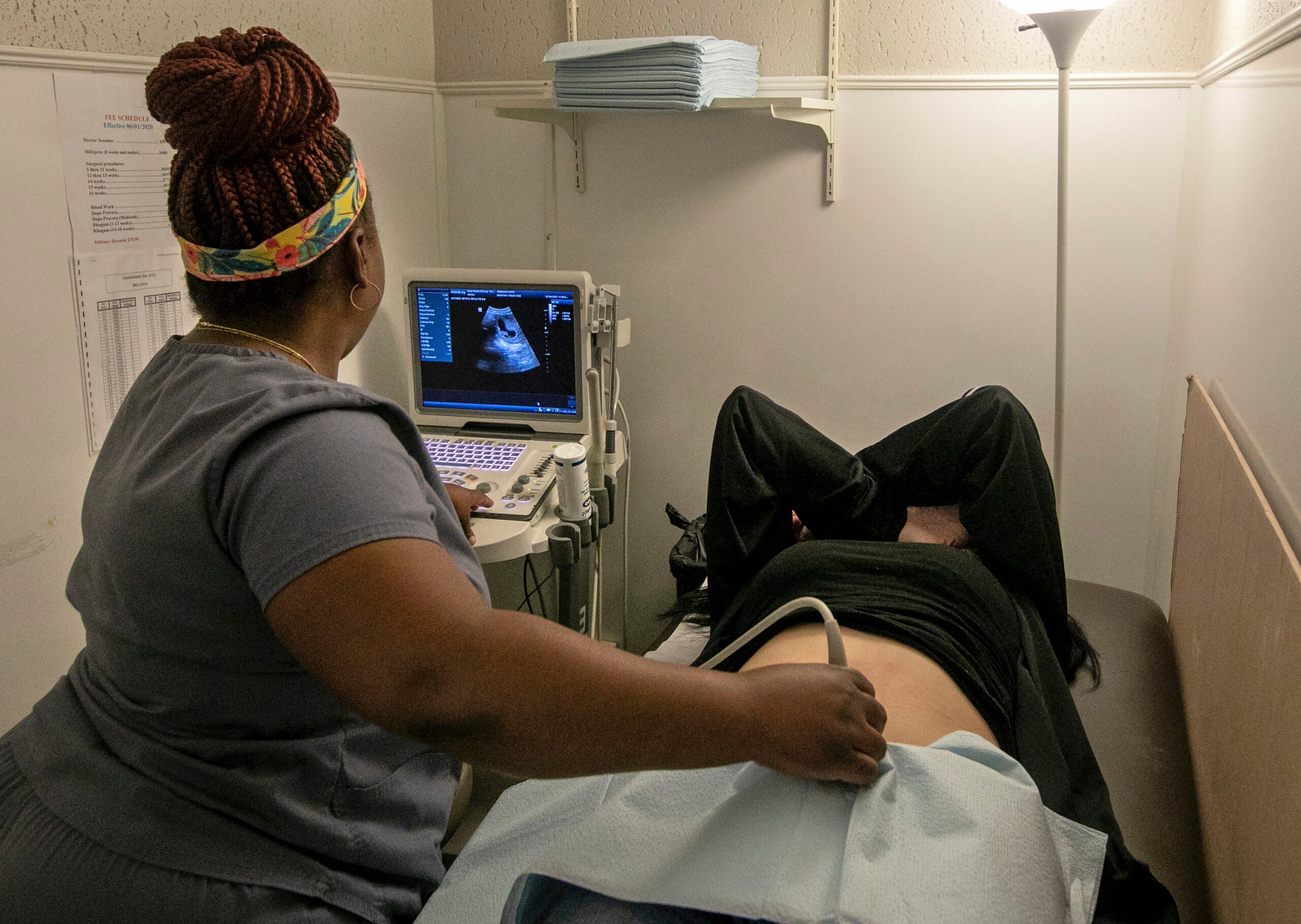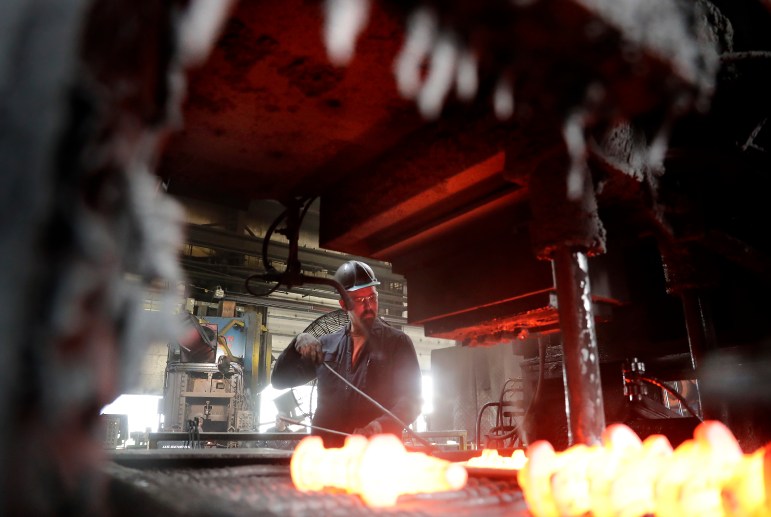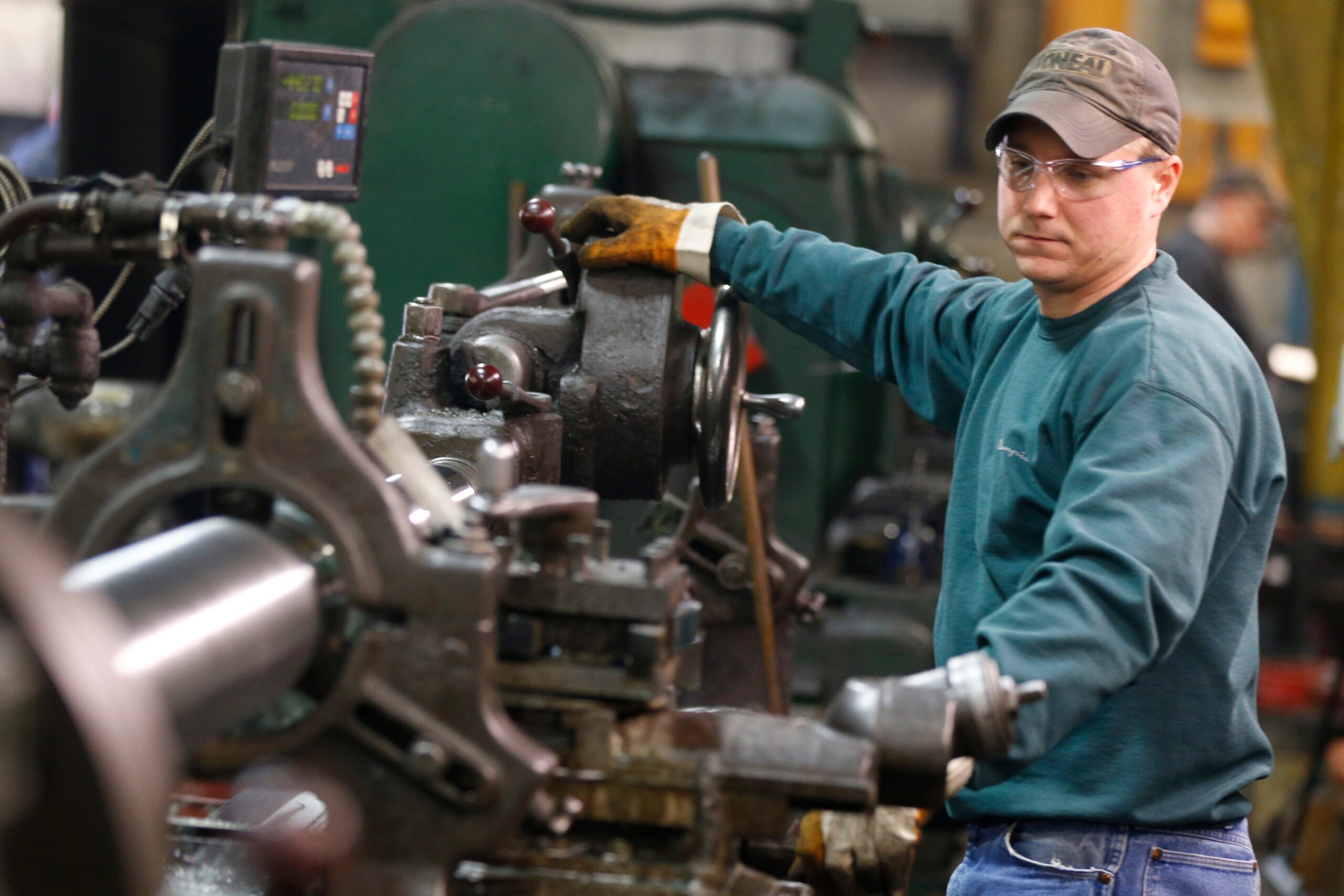Marita Stollenwork recently decided to step away from full-time work at her busy, senior-level job as a project manager for a Milwaukee-area consulting firm.
It was a difficult decision, but juggling conference calls, report writing and virtual learning for her fourth grader and two third graders had gotten to be too much.
“I would have to essentially stop paying attention to the emails and the phone calls from work to be able to keep them engaged in what they were supposed to be doing,” she said.
Stay informed on the latest news
Sign up for WPR’s email newsletter.
When her kids needed her attention, and she couldn’t focus on work, she said she’d use vacation time.
“It was just really difficult,” she said. “It’s really hard.”
In early October, Stollenwork began working part-time instead. The move came with a pay cut, but she stressed that it was necessary for her mental health.
“We all gotta make it through what we’re doing,” she said. “And, you know, for me, these are the steps that I have to take in order to … make sure that I can make it through.”
Women all over the state are confronting the same difficult choices, and many are bearing the brunt of the economic impact of the pandemic. Since April, a month after the coronavirus began spreading across Wisconsin, women experienced higher levels of unemployment than men for four months in a row. Economists and legal experts say it might be decades before we understand the full effects.
Over the summer, Melissa Markgraf was laid off from a job with a food distributor that she’d had for more than a decade.
“My husband and I were pretty much equal breadwinners,” said Markgraf, who lives in Elcho, about an hour’s drive northeast from Wausau. “To lose 50 percent of our income has been hard.”
The family has cut back on all its expenses, canceling cable and other nonessentials. But she said they’re still worried about how they will manage.
The couple has two kids in elementary school, and they’ve chosen to have them in school virtually this year to keep everyone safe.
Markgraf feels like she couldn’t safely go back to work, even if she found a job at a bar or restaurant.
“I don’t have a choice,” she said. “I can’t work and keep my kids out of school. … I don’t know when I’ll be able to go back to work.”
She’s started looking for work she can do remotely, or in the evenings. Her options in the restaurant industry, she said, are severely limited.
‘Erasure Of 40 Years Of Progress’
In the first part of 2020, before the pandemic, women in Wisconsin experienced slightly less joblessness than men. In February, men in Wisconsin had an unemployment rate of 3.8 percent while their female counterparts had an unemployment rate of 2.3 percent, according to data provided by the state Department of Workforce Development.
In April, during the first full month of the pandemic in Wisconsin and Gov. Tony Evers’ now-defunct stay-at-home order, Wisconsin women saw their unemployment rate skyrocket to more than 18 percent, double the size of the unemployment rate for men, which sat at 9 percent the same month.
Since April, women experienced more joblessness than men every month until August, when men recorded a jobless rate of 6.2 percent and women saw their jobless rate drop to 5.5 percent.
“What we’re really facing is a potential wipe out of an entire generation of mothers’ careers and the erasure of 40 years of progress,” said Joan Williams, a professor of law at the University of California-Hastings Law and director of the Center for WorkLife Law.
That may be in part because, in addition to their jobs, women are often also responsible for much of the housework and child care, Williams said.
“Many women are doing at least three people’s jobs,” Williams said. “They’re doing their own job, they’re doing their child care worker’s job, and they’re being teacher’s tech aid.”
About 80 percent of women said they do the majority of the work involved with distance learning, according to a national survey from Morning Consult and The New York Times.
The survey further found 70 percent of women said they do all or most of the housework during the pandemic. Another 66 percent said they were responsible for most or all of the child care.
Tessa Conroy, an assistant professor at the University of Wisconsin-Madison’s Department of Agricultural and Applied Economics, worries this imbalance may lead to women leaving the workforce altogether.
“The data already suggest that’s what’s happening,” Conroy said over email, referring to national data from the U.S. Bureau of Labor Statistics. “In September, about four women left the labor force for every one man.”
Conroy said this could explain why the unemployment rate for women has come down in recent months. She noted that she would typically hope a lower unemployment rate meant that more women were finding jobs again, but with declines in the labor force participation rate for women, it could suggest that women are leaving the workforce entirely.
Impacts That Could ‘Last Well Into The Future’
The impact of women reducing their hours or leaving their jobs altogether has broader implications for the economy, Conroy said.
“At the household level, it may mean lower income and less household spending, which can ripple through an already struggling economy,” she said.
In the near-term for individual women, Conroy said changes in work hours could also mean the loss of employer-sponsored health coverage and retirement contributions.
“If these women do eventually return to work, they’ll probably earn less,” she said. “It can be difficult to get back on the same earnings trajectory after a period of joblessness, especially during a recession. The longer you’re out, the harder it can be.”
Conroy said there could be long-term implications, too.
“They’re also losing working years that would factor into their future social security benefit, so the losses can last well into the future,” she said.
But there’s still a chance for things to shift in the other direction, Conroy pointed out.
“This could be the impetus for new child care solutions, flexible work arrangements and reallocating household responsibilities — all of which could help working parents.”
Wisconsin Public Radio, © Copyright 2024, Board of Regents of the University of Wisconsin System and Wisconsin Educational Communications Board.






